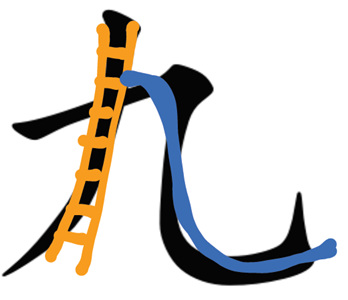Tips and Tricks to Successfully Learn Chinese
Background:
Andrea learned Chinese as an adult and is now a non-native Chinese teacher with five years’ experience in high school teaching. She is a native English speaker with a degree in Chinese and German and is currently learning Spanish. Because of this, she has spent a lot of time trying out all sorts of language-learning techniques, discovering what works and what doesn’t.
Here are her top tips and tricks for successfully learning Chinese.
The Tips:
1) Learn to Listen
Bernard M. Baruch, a successful American businessman from the early 20th century, said, “Most of the successful people I’ve known are the ones who do more listening than talking.” To learn a language faster, get as much listening input as you can from podcasts, radio, and videos. I find that eavesdropping on the people around me (e.g. At a restaurant or supermarket) is particularly useful because they will often be talking about everyday things and using immediately useful vocabulary. You can use WeChat to hold verbal conversations with Chinese friends. This is great because you can replay the audio as many times as you like and then record your responses. This repetition will help you master the language.
2) Practice Pronunciation
To get your pronunciation perfect, try flipping through Chinese flashcards sets on Quizlet. You can click to hear the words read out loud and mimic what you hear multiple times until it sounds right. You can also record your own voice and compare it to the audio with the correct pronunciation.
Also, whenever you learn a new word, write a little note to yourself on how you would read it phonetically. Eg. Miàntiáo (noodles) could be written as ‘myen tyow’ until you’re used to the proper pinyin. (Editor`s note: well, we still suggest that try to learn from standard pronunciation.)
3) Develop Vocabulary
Keep a little notebook for writing down new words that you encounter. I have found out that if someone tells me a new word but I don’t actually see it in written form, I’m not going to remember it. Seeing the word as well as hearing it locks it into your memory more effectively.
From your notebook, make flashcards of those words to test yourself and refresh your memory. Personally, I find paper flashcards great because of the kinesthetic experience of feeling the cards, flipping them over, and shuffling them. By the end of my degree, I had a collection of over 3,000 cards! However, if you prefer a digital version, there are many options out there (including Quizlet). Flashionary is another great app; it primarily works as a Chinese dictionary, but when you look a word up there is a ‘+’ button that allows you to add the word to your digital deck(s) of flashcards.
I like to provide my students with options (Quizlet, Sugarcane, GoVocab, paper flashcards) so that they can find what best works for them.
4) Create a Connection to Chinese Characters
Many people are intimidated by Chinese characters. Common comments are how there are so many of them and how complicated they look. I’m not going to lie. It does take effort to become proficient with Chinese characters. But there is good news: characters are made up of different components which often give you clues about the meaning and pronunciation. The more characters you know, the easier it is to learn because you can start connecting characters with the other ones you already know.
When you’re starting out with characters, I find it helps a lot to make pictures out of them. I’m not saying that all Chinese characters are based on pictures, because that’s not true (only about 10% have their origins in pictures). What I mean to say is that it’s easier to remember what a character means if you make a picture or connection in your mind.
For example (and apologies for the bad drawing):
- I very easily get the characters 七(7) and 九 (9) mixed up, so, to mentally separate them in my mind, I think “niiiine looks like a sliiiide” and back it up with a picture in my head.
- To mentally separate the characters 姐 (older sister) and 妹 (younger sister) I think of the following pictures:

- For the character 猪 (pig), I make a picture out of only one component of the character, but it helps me to remember the meaning.
When it comes to learning to write characters, good old rote learning seems to be the most effective way. By writing it out multiple times, you are strengthening the new memory-connections which are formed in your brain. Try copying the character a few times and then covering it to see if you can write it from memory.
5) Understanding the Culture
One of the best ways to absorbe the language is to try and understand the cultural concepts behind it. Ask yourself questions like “Why is a word like this used in this culture?” Go beyond thinking “That’s weird” or “We do things differently” and try to understand the reasons behind the differences. By putting yourself in the shoes of a native-speaker, you will learn the language faster. This builds strong connections with what you are learning, and it also gives you cultural empathy, better cross-cultural communication skills, and fosters deeper understanding between different types of people.
The Tricks:
1) Find the Ideal Learning Environment
The best way to learn how to swim is to jump into the water. The same goes for learning a language. By far, the best thing that you can do for your language learning is to spend time in a country, community, or club where people use the language and you are forced to speak it. It can be as simple as going to your local Chinese supermarket and asking where a certain item is, how much something costs, what brands are good, etc. By immersing yourself, you will absorb knowledge faster.
2) Don’t Be Afraid to Make Mistakes
One thing is guaranteed when you’re learning a language; you will make mistakes – it’s unavoidable, so it’s best to accept this fact right from the start. As an introvert, I have struggled with taking risks at times, but you can step outside of yourself, face your fear, and create a different persona for the language you are learning. Many people who speak multiple languages report having a different type of ‘personality’ for each language that they speak. So, if you naturally hold back and try not to take risks, try using a new language as a way to ‘step outside’ of yourself. And remember, it’s not how many mistakes you make that matter. It’s how many times you learn from your mistakes so that you can correct yourself and become better. That applies not just to learning a language, but to life in general.
3) Get Help From Others
Sometimes, the best way to learn is from other people. Ask native speakers to correct your grammar and pronunciation. They are usually happy when you make an effort to speak their language and won’t mind correcting you. And don’t get upset about being corrected even if you’re not asking for help! It’s all a part of the entire learning journey.
4) Find Your Suitable Learning Styles
As the old saying goes, “If at first you don’t succeed, try and try again.” Try all kinds of methods and see what works best for you. Remember that what works for one type of student may not work for another. It will also help you discover what your dominant learning style is (Visual, Aural, Verbal, Kinesthetic, Logical, Interpersonal, or Intrapersonal). There are tests you can take on the internet to find out. Many people are a mix of a few of these styles, not just one. When you find the best mix that works for you, your learning will progress much faster.
In summary, the top tips to learn any language are:
- Be willing to take risks, put in the effort, and accept ideas that are outside your comfort zone.
- Get as much consistent and regular language exposure as possible. Ten minutes a day is better than one hour a week.
- Find the learning techniques that help you best, then practice, practice, practice (repetition is your friend).







Very nice, thanks for sharing tricks